What's New
Displaying results 2141 - 2150 of 4052
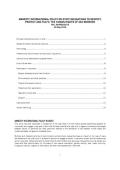
Resource | Laws and Policies,
This policy has been developed in recognition of the high rates of human rights abuses experienced globally by individuals who engage in sex work; a term that Amnesty International uses only in regard to consensual exchanges between adults. It identifies the most prominent barriers to the realization of sex workers’ human rights and underlines states’ obligations to address them.
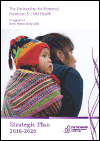
Resource | Publications,
The Partnership for Maternal, Newborn & Child Health is fully aligned with the Every Woman Every Child (EWEC) movement and the Global Strategy for Women’s, Children’s and Adolescents’ Health. We share a vision of a world in which every woman, child and adolescent in every setting realises their rights to physical and mental health and well-being, has social and economic opportunities and is able to participate fully in shaping prosperous and sustainable societies. Collectively, we have the knowledge, the tools, and the capability to achieve this vision. The multi-stakeholder platform created by the Partnership engages, aligns and holds accountable the efforts of all Partners so that together, we can fully harness our collective capability to achieve more than any individual Partner could do alone.
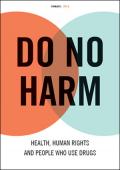
Resource | Publications,
Evidence supports the need for a shift in the global approach to drug use. In this report, Do no harm: health, human rights and people who use drugs, UNAIDS shows what works to reduce the impact of HIV and other harms related to drug use. Countries that have moved away from laws and policies that are harmful to people who use drugs and that have increased investment in harm reduction have reduced new HIV infections and improved health outcomes. These policies also deliver broader social benefits, such as lower levels of drug-related crime and reduced pressure on health-care and criminal justice systems.
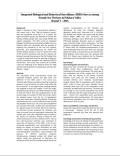
Resource | Fact Sheets,
Nepal is reported to have "concentrated epidemic," that means only a few "high-risk behavior groups" have HIV prevalence more than 5%. In Nepal, the high-risk behavior groups are identified as Female Sex Workers (FSWs), people who inject drugs (PWID) and migrant population. This fifth round of Integrated Biological and Behavioural Surveillance (IBBS) survey in Pokhara valley was conducted with the purpose of exploring the prevalence of HIV and STIs (syphilis, gonorrhea, and chlamydia) among the female sex workers (FSWs). It aims to monitor the trends of HIV and STIs prevalence and also the relevant risk behaviors among these group so that the findings from it could be importantly used for planning strategy for HIV/STIs prevention programs and reducing HIV/STIs transmission. The survey was carried out by SAIPAL under the leadership of the National Center for AIDS and STD Control (NCASC) in collaboration with Save the Children – Nepal.
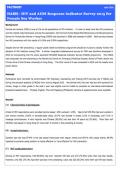
Resource | Fact Sheets,
Despite the low HIV prevalence, a regular public health surveillance programme should be in place to closely monitor the situation of HIV infection among FSW. A similar integrated biobehavioural survey for FSW was therefore developed in 2013 by incorporating into the newly launched HIV/AIDS Response Indicator Survey (HARiS) programme. The HARiS was conducted via commissioning to the Stanley Ho Centre for Emerging Infectious Disease, School of Public Health and Primary Care of the Chinese University of Hong Kong. The third round of it was conducted in 2015.
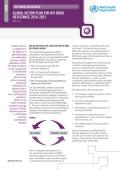
Resource | Guidelines,
The World Health Organization (WHO) is committed to ensuring that the great success of HIV treatment scale-up is not threatened by HIV drug resistance (HIVDR). Preventing HIVDR is an important part of meeting the 90-90-90 targets by the year 2020.
The development of a five-year plan reflects a global consensus that HIVDR in lower and middle-income countries requires a coordinated and resourced response. The Global Action Plan is an agreement by key partners about their respective roles in preventing, monitoring, and responding to HIVDR.
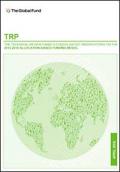
Resource | Publications,
During the nine review windows of the 2014-2016 allocation-based funding model, the Technical Review Panel (TRP) reviewed 222 concept notes from 106 countries, including 30 regional concept notes, with a total value of US$13.8 billion representing 94 percent of allocated funds. Drawing from the TRP’s consolidated learning, observations and experiences from reviewing concept notes during this funding model, this report looks forward and focuses on contributing to the next Global Fund strategy and its operationalization.
The report aligns with Global Fund’s 2017-2022 Strategy "Investing to End Epidemics," and provides a number of recommendations under each strategic objective, based on the observations of the Technical Review Panel (TRP).
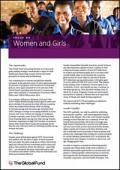
Resource | Publications,
The Global Fund is focusing sharply on women and girls, making strategic investments to improve their health and supporting country-driven processes grounded in equity and inclusiveness.
Our commitment to women and girls has steadily increased in the past five years. In 2010, approximately 46 percent of programs were focused on women and girls; in 2015, approximately 55 to 60 percent of the Global Fund’s spending was directed to women and girls. That translates to investments of between US$15 billion and US$16 billion since 2002.
It is making a difference. Between 2005 and 2014, AIDS-related deaths among women aged 15 years and above declined 58 percent in 13 key African countries where the Global Fund invests, while declining 39 percent among men the same age. Antiretroviral (ARV) therapy coverage is becoming available to more women, and more women are staying on treatment. In many countries, rates of new HIV infections have been dropping faster among men than among women. However, experience in high-HIV burden countries in Africa with Global Fund-supported programs shows that the new infection rates are declining equally among women and men.
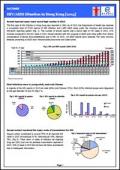
Resource | Fact Sheets,
The first case of HIV infection in Hong Kong was reported in 1984. As of 2015, the Department of Health has received a cumulative total of 7,718 reports of HIV infection and 1,655 AIDS cases under the voluntary and anonymous HIV/AIDS reporting system. The number of annual reports was a record high of 725 cases in 2015, 11% increase compared to the 651 cases in 2014. People infected with HIV progress to AIDS when they suffer from clinical complications of severe immunodeficiency due to HIV. In 2015, 110 AIDS reports were received. The most common illnesses presenting at AIDS were Pneumocystis pneumonia and tuberculosis.
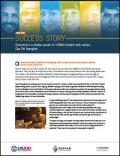
Resource | Publications,
Social media are not only a means for men who have sex with men (MSM) to find friends and sexual partners. They are also an important driver of the sexual norms that influence HIV risk among these men. The USAID- and PEPFAR-funded LINKAGES Thailand project is targeting these norms through an innovative web series, Gay OK Bangkok, which drew more than 60,000 viewers in March with a soapy story of love, trust, and HIV.
Gay OK Bangkok was developed and launched by the Asia-Pacific Coalition on Male Sexual Health APCOM), a LINKAGES Thailand implementing partner, as part of their ongoing TestBKK campaign, which seeks to generate demand for MSM-friendly HIV testing services in Bangkok and around Thailand. The five-part web series, which was modeled on a popular Thai teenage television drama, Hormones, focuses on the relationship trials and tribulations of a group of young, gay men living in Bangkok. It weaves a number of health issues into its storylines, including HIV testing, treatment, and pre-exposure prophylaxis (PrEP).





